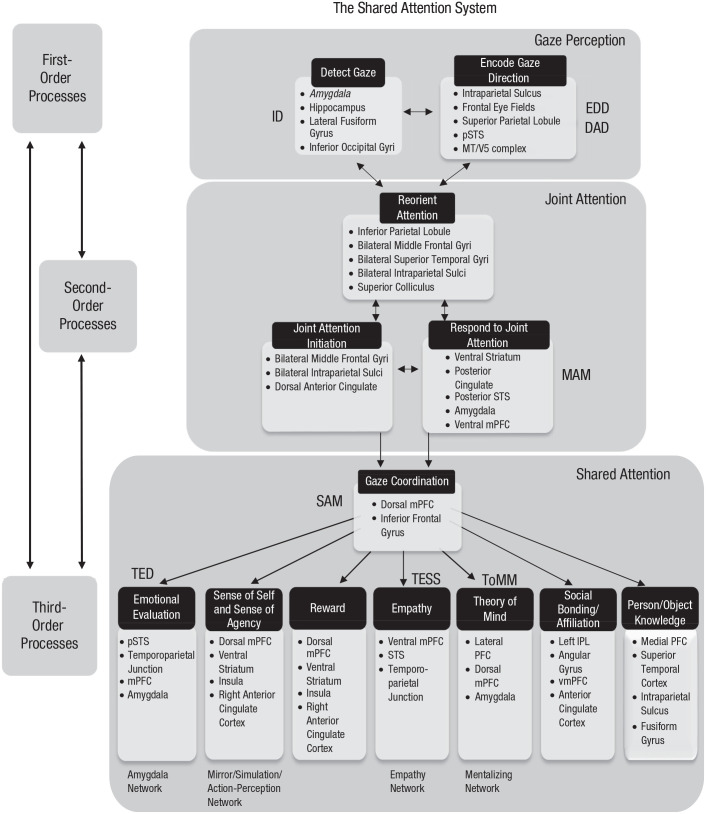Fig. 2.
The shared-attention system. This figure shows how first-, second-, and third-order processes are involved in facilitating gaze detection, leading to the act of joint attention, which is a necessary precursor to shared attention when both agents are aware of each other’s attentional state, which can lead to important social cognitive outcomes: emotional evaluation, sense of self and agency, reward, empathy, theory of mind, social bonding/affiliation, and person knowledge. In our model, we included all of Baron-Cohen’s (1994, 2005) conceptualized mechanisms (ID = intentionality detector; EDD = eye-direction detector; SAM = shared-attention mechanism; TED = the emotion detector; TESS = the empathizing system; ToMM = theory-of-mind mechanism) and also those of Perrett and Emery (1994; DAD = direction-of-attention detector; MAM = mutual-attention mechanism). We included subserving brain regions for each of the processes in the model, and in addition, we included the “social brain” networks highlighted by Stanley and Adolphs (2013)—the amygdala, empathy, mentalizing, and mirror/simulation/action-perception networks. See The Brain Regions in the Model section for the research that informs the involvement of these regions. STS = superior temporal sulcus; IPL = inferior parietal lobule; PFC = prefrontal cortex; m = medial; p = posterior; vm = ventromedial.

